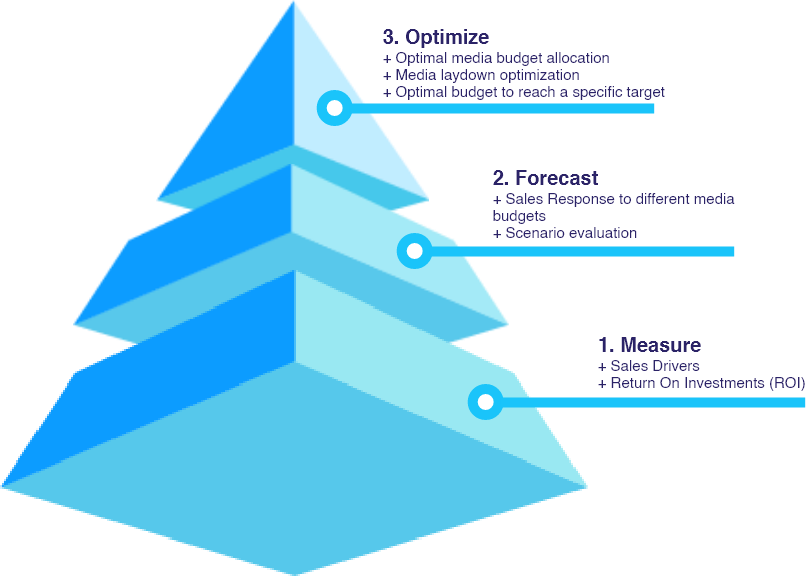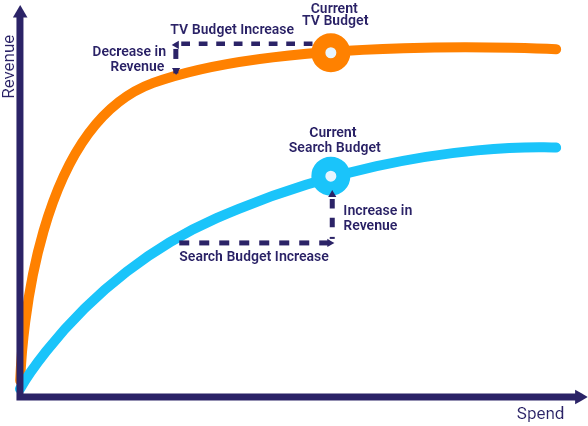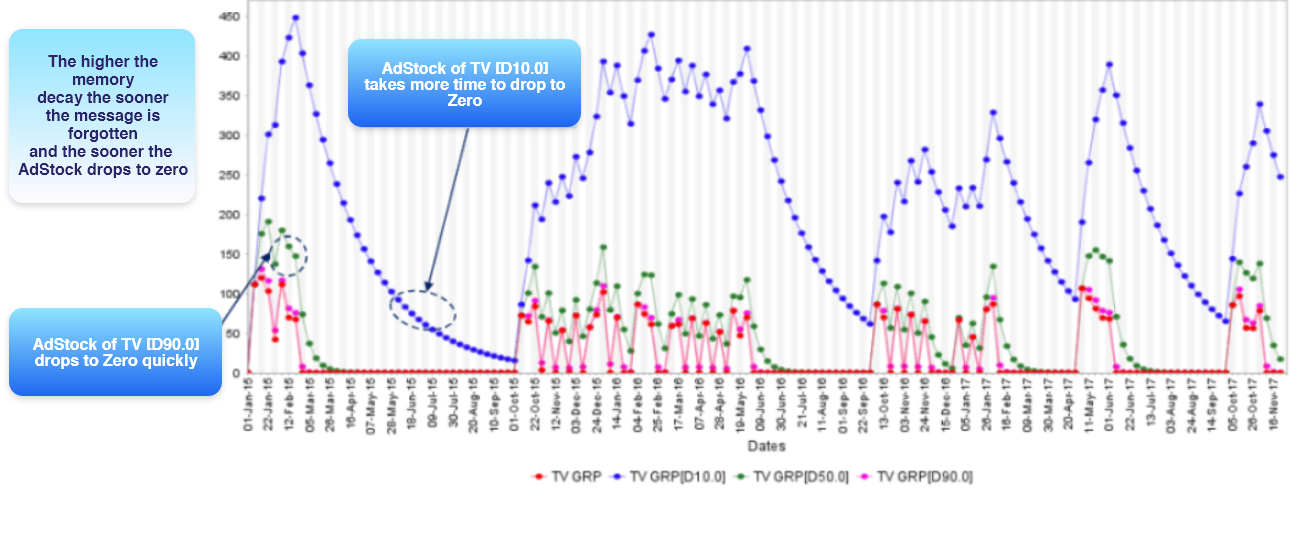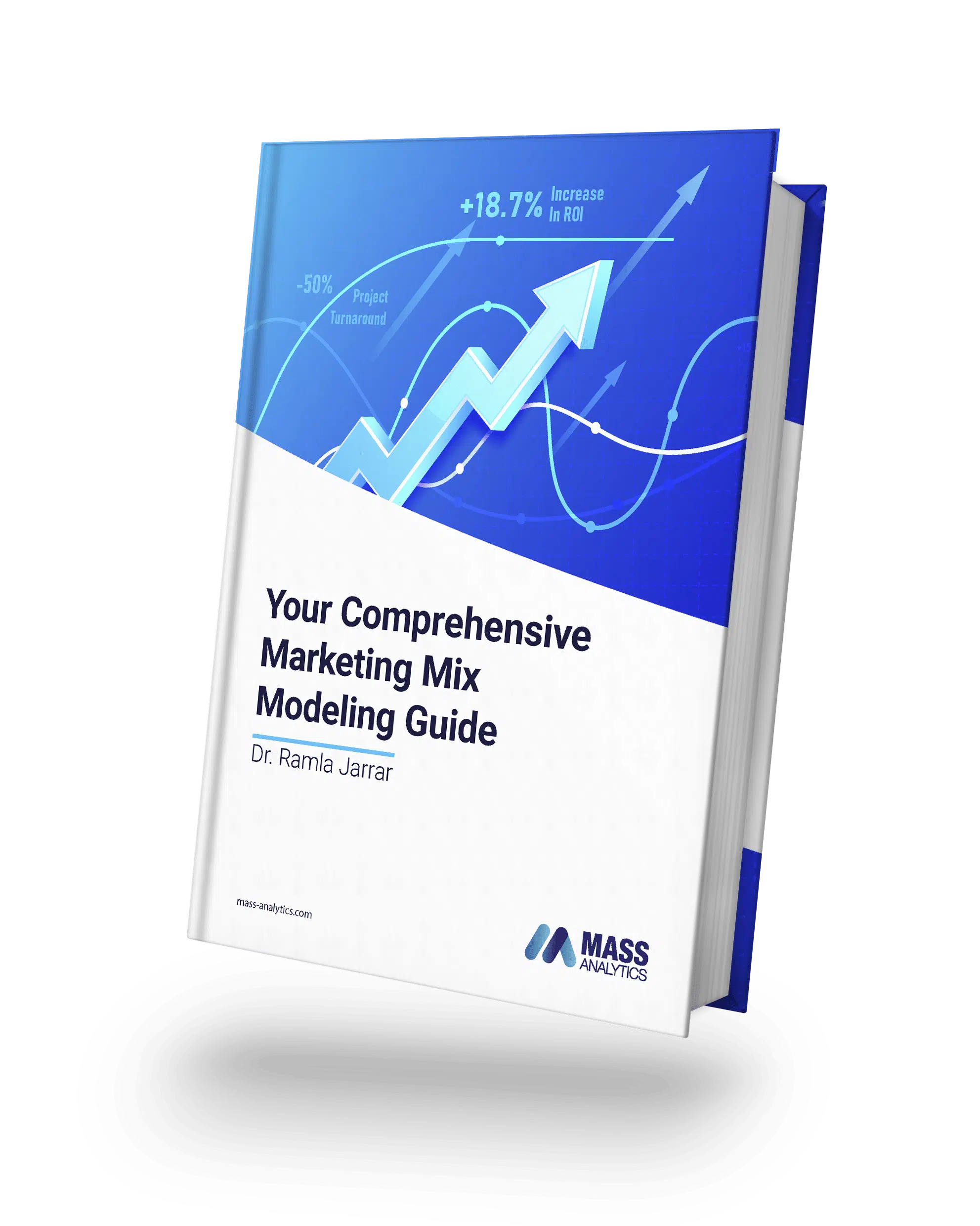4 Tips For Robust And
Actionable Optimization
4 Tips For Robust And
Actionable Optimization

Marketing Mix Modeling (MMM) uses advanced statistical techniques to analyze historical data.
It helps marketers uncover business drivers, break down the contribution of every single factor; measure the return on investment of offline and digital channels; predict future performance; and, most importantly, optimize budgets to boost business performance.

The graph below illustrates the three building blocks of a Marketing Mix Modeling Project:

To achieve a robust and actionable optimization, it is crucial that the Measurement building block be carried out meticulously as it is the backbone of all the other steps.
With that being said, what the business is usually interested in is Optimization. In essence, optimization uses the impacts and saturation levels measured during the modeling phase to allocate a budget to the channel that has the highest incremental revenue. In this blog, we provide you with four useful tips to achieve robust and actionable optimization.
1. Understand the Brand DNA and Impact of
Media Activities

In general, creating sophisticated econometrics equations that realistically mimic the customer behavior, starts with a detailed understanding of the brand, its context, and challenges, as well as understanding the customers and their reaction to the different marketing activities.
This applies to traditional mass media just as much as it applies to digital media. The modeler needs to understand the way each channel functions and the metrics available for measurement, such as impressions, clicks, call-to-action, GRPs, etc. This will help them determine the transformations they should apply to the data and what variables they should include in the model, and at which level.
2. Account for media saturation through applying Diminishing Returns

In the measurement stage diminishing returns, which account for saturation, need to be built for each media channel.
The law of diminishing returns refers to the idea that any investment increase generates additional revenue but at a slower pace, i.e., decreasing marginal returns. Starting from a certain point, generating additional revenue becomes too expensive and that is where saturation happens. The chart below is an illustration of this.

Note that generally, diminishing returns are applied after accounting for the media carryover effect. The latter is commonly measured through the AdStock function. This feature depicts the delayed effect between the moment the consumer sees an Ad and the moment they react to it. This is how the optimization exercise becomes possible and successful.
In the following example, the modeler created 3 Adstocks: 10%, 50%, and 90% memory decay. The smaller the decay the longer the message remains in the consumers’ memory:

Note that [D10] means that the memory decays by 10%, in other terms the consumer keeps 90% of the message week on week and loses 10% of the initial message.
In multiple cases, we have seen brands willing to perform budget allocation and run optimization without accounting for saturation in the modeling phase. This left them with linear curves. In other terms, any optimizer will allocate the budget to the media with the highest slope regardless of the investment phase at which they were.
3. Use Appropriate Tools to Obtain Robust Results

Clients usually ask us to optimize their media budget. Thus, we need to thoroughly analyze the variables’ shape and apply the right transformations including AdStock and diminishing returns.
This could be achieved by using bespoke tools that enable the user to track the shape of the curves they are creating, at both the modeling and the optimization stage. It is essential to be able to visualize and analyze the Diminishing Return curves at the modeling phase so the user does not end up with a curve that never reaches saturation or with one that is highly saturated. Extreme cases like this will lead any optimization algorithm to not allocate any money to the saturated channel, and instead, push all of it towards the non-saturated ones.
This is not something that the business would accept. Thus, the analyst should create an array of “sensible” curves that make sense commercially and leave it to advanced AI-powered algorithms to choose the one that constitutes the best fit for the model.
It is highly advisable here to get the advice of media agencies, or media experts, on whether the shape of the curves and their saturation level makes sense.
4. Perform Modeling and Optimization Iteratively

The juiciest part of any Marketing Mix Modeling project is the insight and recommendations delivery.
Automated Modeling can be leveraged to create models that are sound statistically and commercially. However, the modeler needs to deploy these models to produce actionable insight on how to optimize media and marketing going forward. To achieve project efficiency and save weeks’ worth of work, it is essential that there is a direct link between modeling and optimization and that we do not consider them as a sequence, i.e., when modeling finishes optimization starts!

The optimization process must be agile and iteratively performed over time as opposed to waiting until the modeling phase is over to begin optimization. This will ensure the best quality possible while slashing the modeling phase duration for improved efficiency.
Conclusion
Optimization is one of three building blocks of an Marketing Mix Modeling project. However, it is the part the client is usually interested in the most. To deliver meaningful optimization, it is important to start by thoroughly understanding the brand and its media activities. At a later stage, the analyst needs to apply diminishing returns to all the media channels and use appropriate tools that help them gain time; they also need to keep in mind that Optimization and Modeling should be run iteratively following an agile process.







